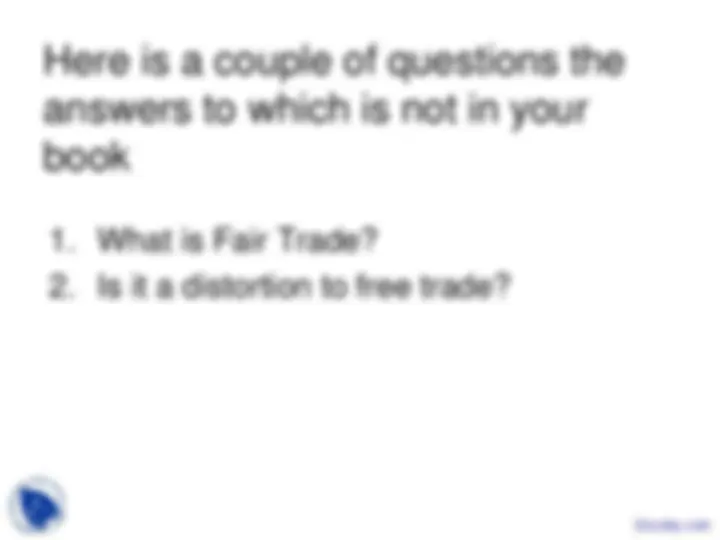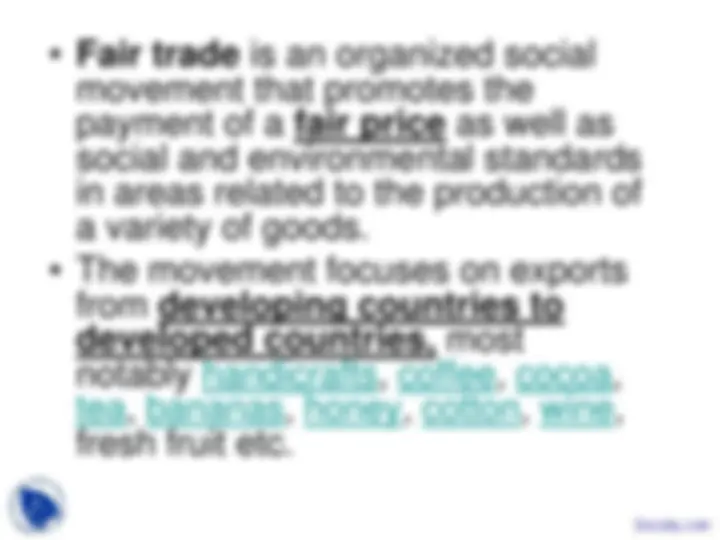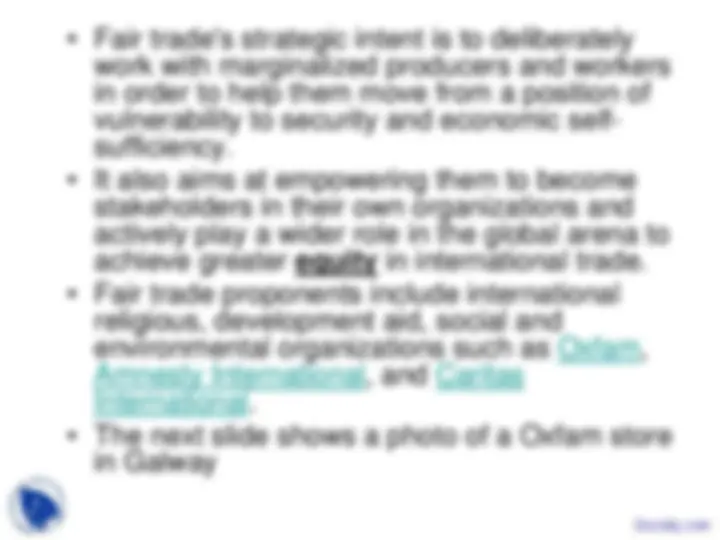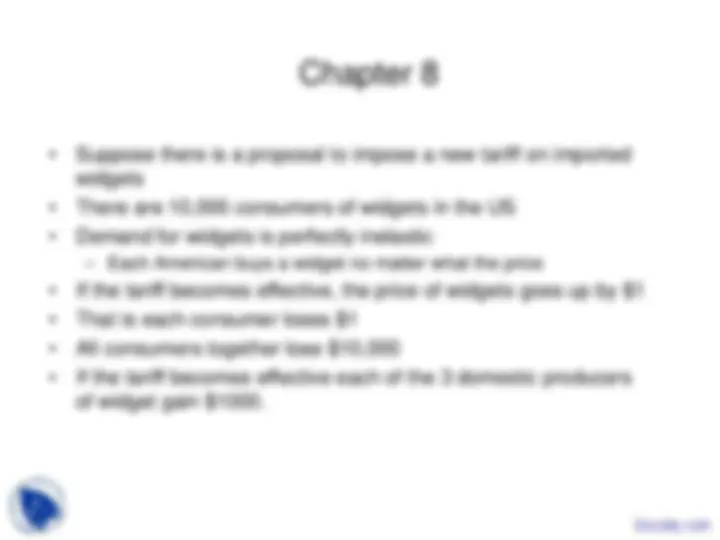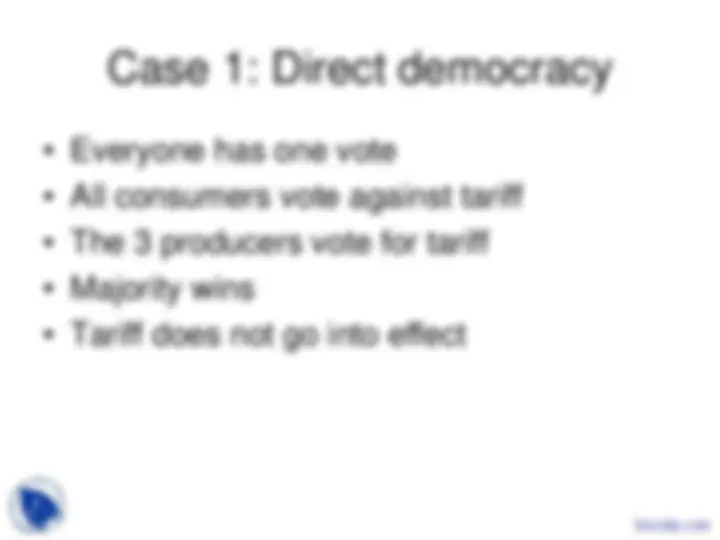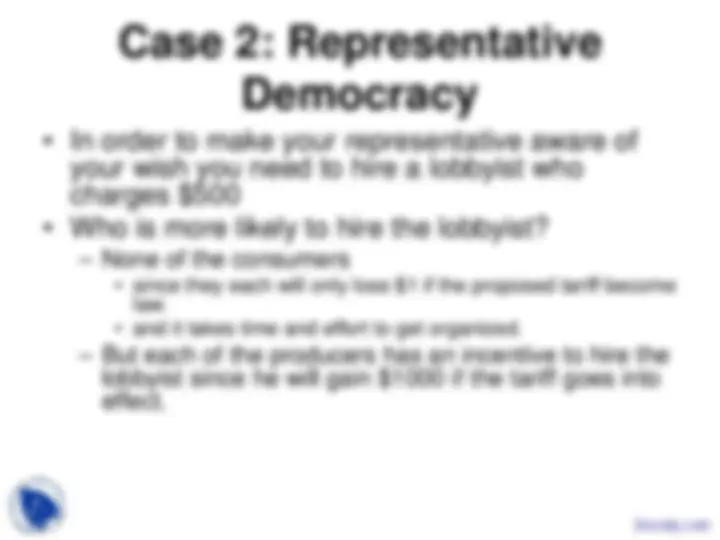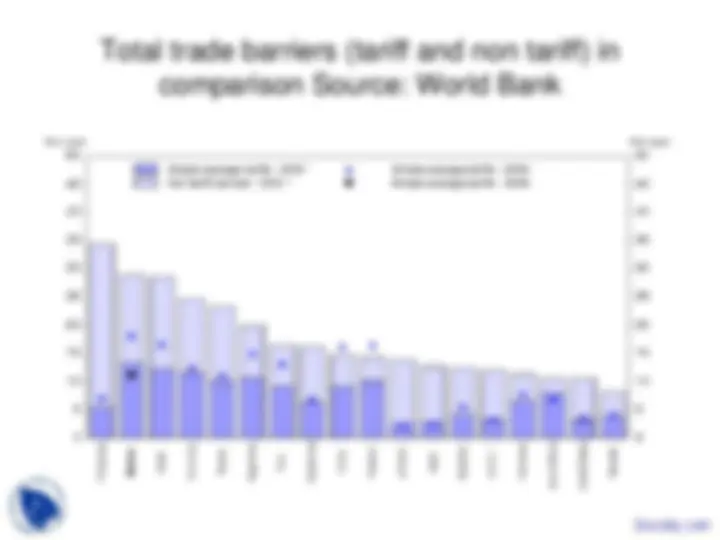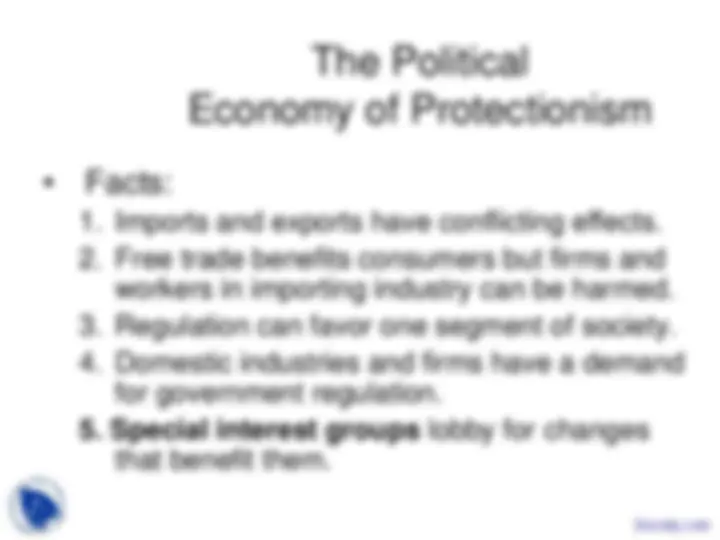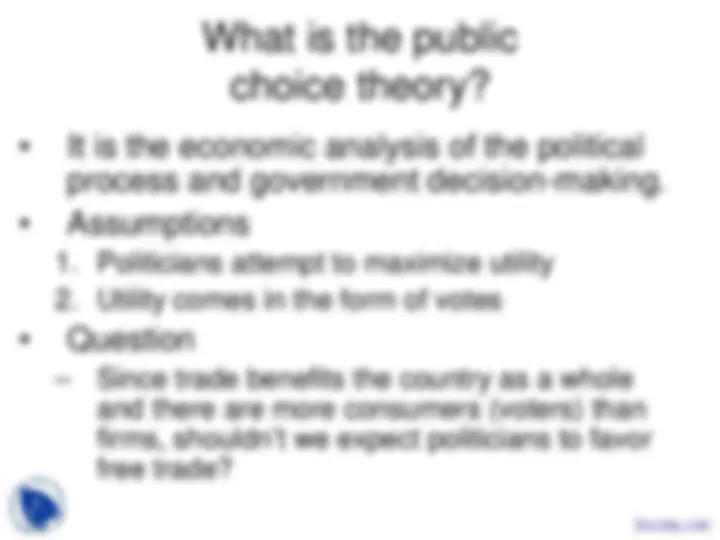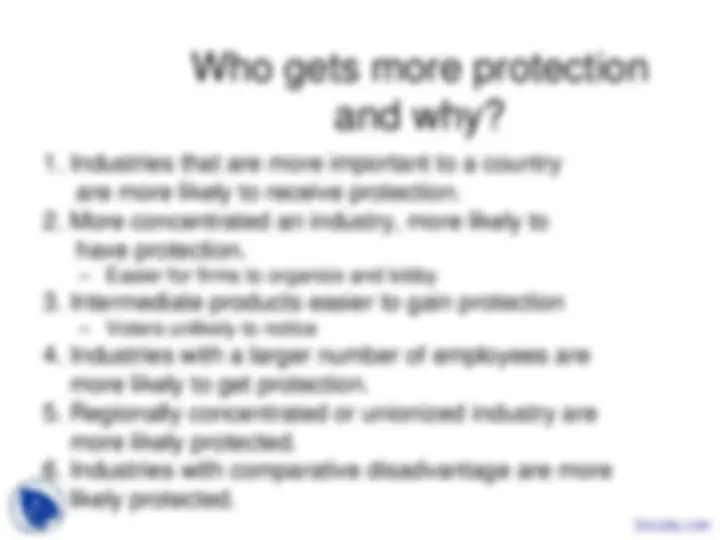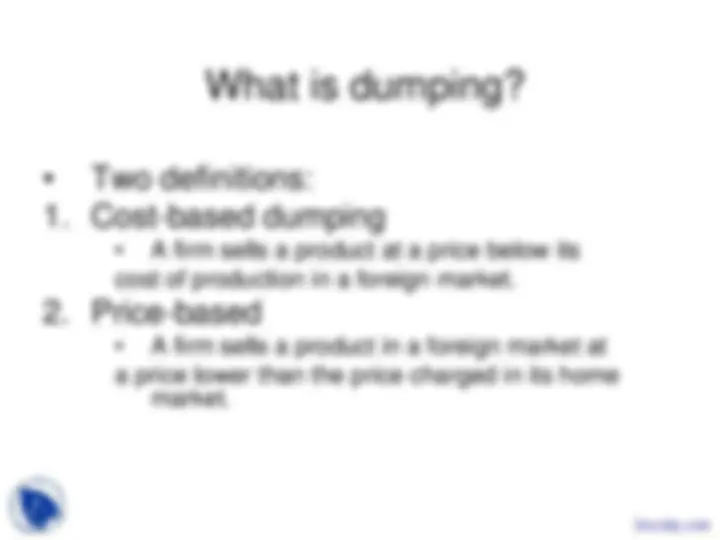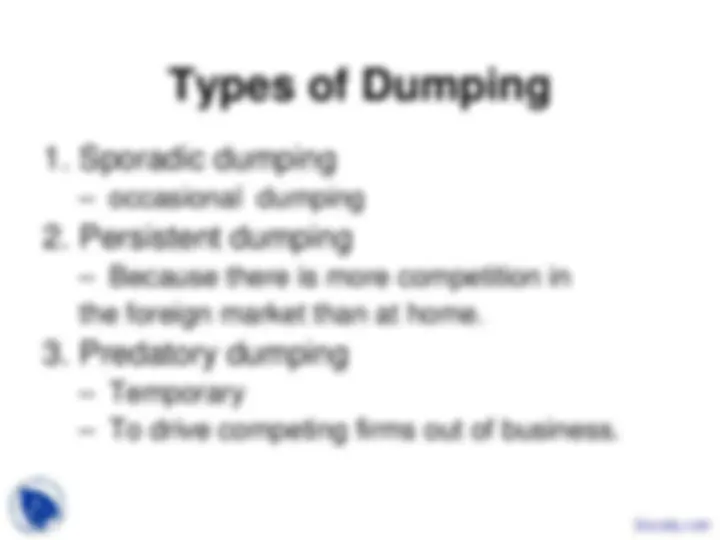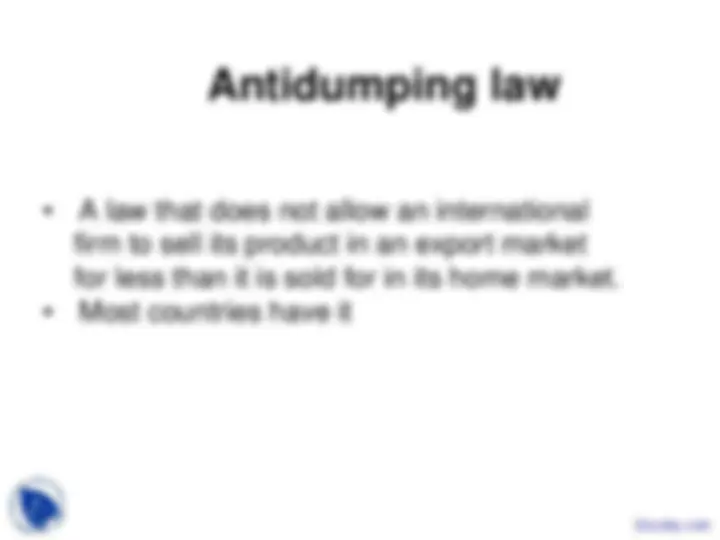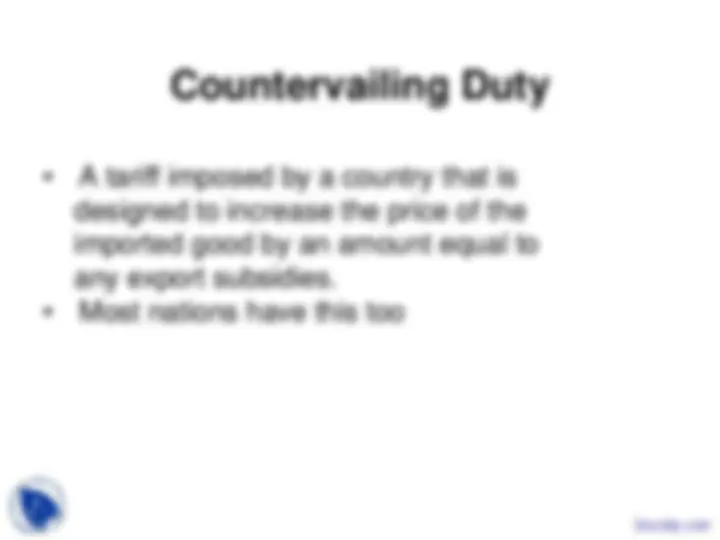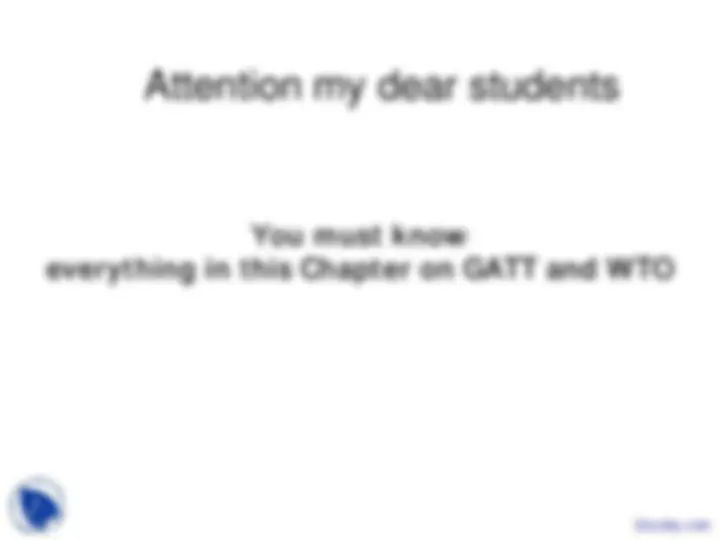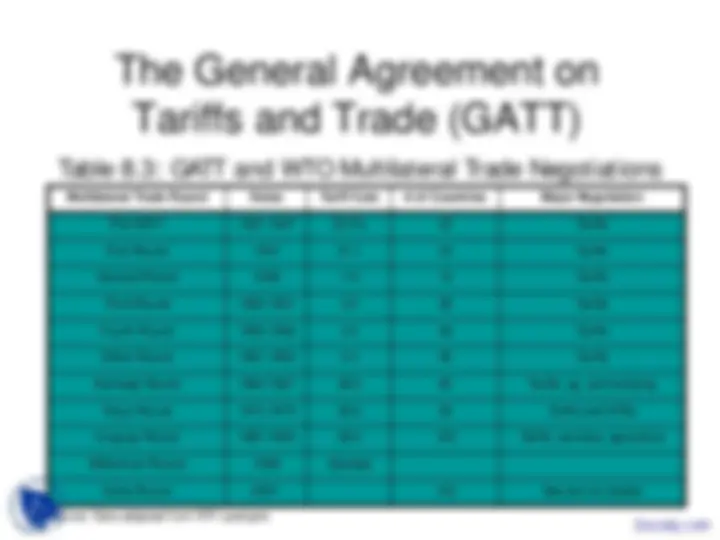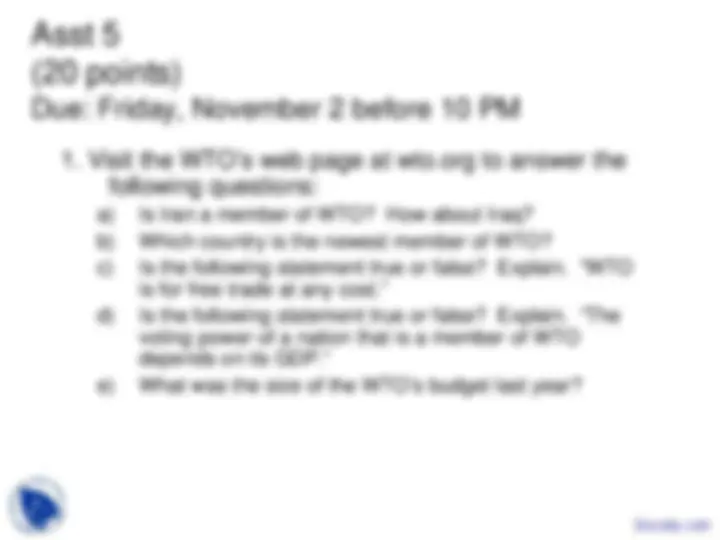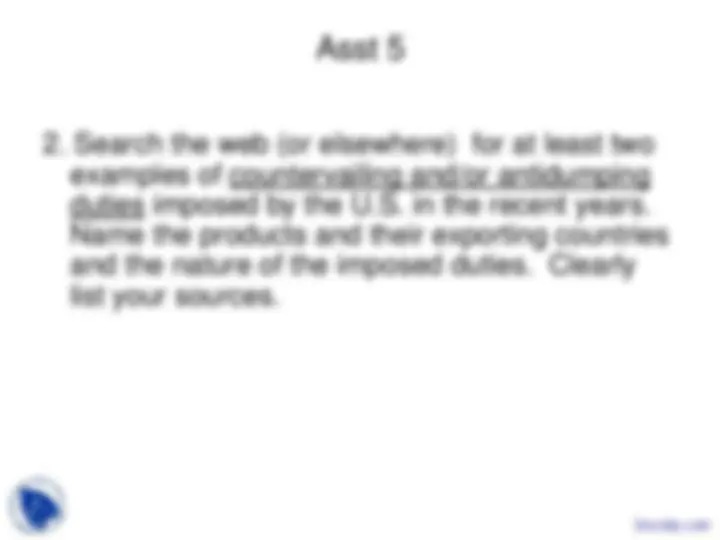Download Effect as Tariff - International Economics - Lecture Slides and more Slides Economics in PDF only on Docsity!
Suppose initially quota has the same
effect as tariff
S
D
Price of Cloth
20 30 60 70^ Quantity of Cloth
10
12
S + Q
Tariff
- Tariff = $2 per unit
- Quota = 30
- Gain in producer surplus = a
a
Now domestic demand grows to D’
S
D
Price of Cloth
20 30 60^ Quantity of Cloth
10
12
S + Q
D’
Under tariff, P is still 12, imports go down to to 10 and the gain in producer surplus remains the same ( a= b + c)
Under quota, at p =12 there is a surplus P↓ to 11, domestic production goes down to 25 and producer surplus goes down to c
40
b
Quota is more restrictive
11
25 55
c
- Fair trade is an organized social
movement that promotes the payment of a fair price as well as social and environmental standards in areas related to the production of a variety of goods.
- The movement focuses on exports
from developing countries to developed countries, most notably handicrafts, coffee, cocoa, tea, bananas, honey, cotton, wine, fresh fruit etc.
- Fair trade's strategic intent is to deliberately work with marginalized producers and workers in order to help them move from a position of vulnerability to security and economic self- sufficiency.
- It also aims at empowering them to become stakeholders in their own organizations and actively play a wider role in the global arena to achieve greater equity in international trade.
- Fair trade proponents include international religious, development aid, social and environmental organizations such as Oxfam, Amnesty International, and Caritas International.
- The next slide shows a photo of a Oxfam store in Galway
Controversy
- Some economists see fair trade as a type
of subsidy that distorts free trade.
- Segments of the left criticize fair trade for
not doing enough.
Chapter 8
- Suppose there is a proposal to impose a new tariff on imported widgets
- There are 10,000 consumers of widgets in the US
- Demand for widgets is perfectly inelastic
- Each American buys a widget no matter what the price
- If the tariff becomes effective, the price of widgets goes up by $
- That is each consumer loses $
- All consumers together lose $10,
- If the tariff becomes effective each of the 3 domestic producers of widget gain $1000.
Case 2: Representative
Democracy
- In order to make your representative aware of your wish you need to hire a lobbyist who charges $
- Who is more likely to hire the lobbyist?
- None of the consumers
- since they each will only lose $1 if the proposed tariff become law.
- and it takes time and effort to get organized.
- But each of the producers has an incentive to hire the lobbyist since he will gain $1000 if the tariff goes into effect.
So under Representative
Democracy
- Tariff is likely to be imposed
- This is called rent –seeking behavior
- Occurs when government approves a program that benefits only a small group within society, but the society as a whole pays the cost.
Total trade barriers (tariff and non tariff) in
comparison Source: World Bank
- Facts:
- Imports and exports have conflicting effects.
- Free trade benefits consumers but firms and workers in importing industry can be harmed.
- Regulation can favor one segment of society.
- Domestic industries and firms have a demand for government regulation. 5. Special interest groups lobby for changes that benefit them.
The Political
Economy of Protectionism
Answer
- Not necessarily;
- The loss in one consumer’s surplus due to trade restriction may not even be noticeable to him.
- Consumers cannot easily form groups, get organized and let politicians hear them but firms can.
- Given group support, votes to politician may increase.
- Politicians favor programs having immediate and clear-cut benefits with vague or deferred costs.
- Detailed tariff schedule allows politician to pick up votes for protecting specific good without protests from average consumer. - Tariffs on very similar goods may be very different.
- Firms with comparative advantage
lobby foreign governments for free
trade of exports.
- Firms that compete with imports
would lobby for protection from
imports.
Who does what?
1. Cost-based dumping
- A firm sells a product at a price below its cost of production in a foreign market.
2. Price-based
- A firm sells a product in a foreign market at a price lower than the price charged in its home market.
What is dumping?
1. Sporadic dumping
2. Persistent dumping
- Because there is more competition in the foreign market than at home.
3. Predatory dumping
- Temporary
- To drive competing firms out of business.
Types of Dumping

